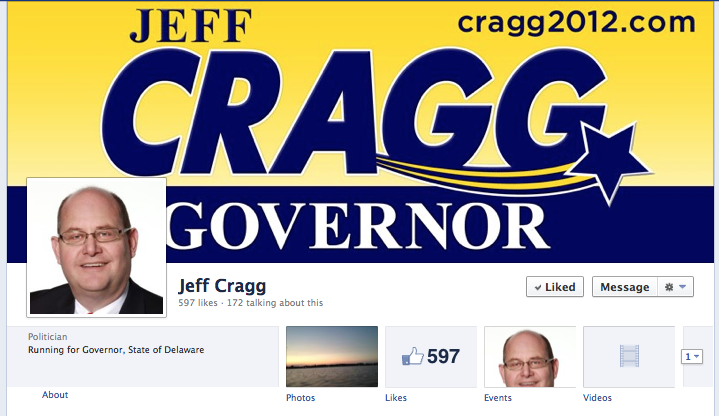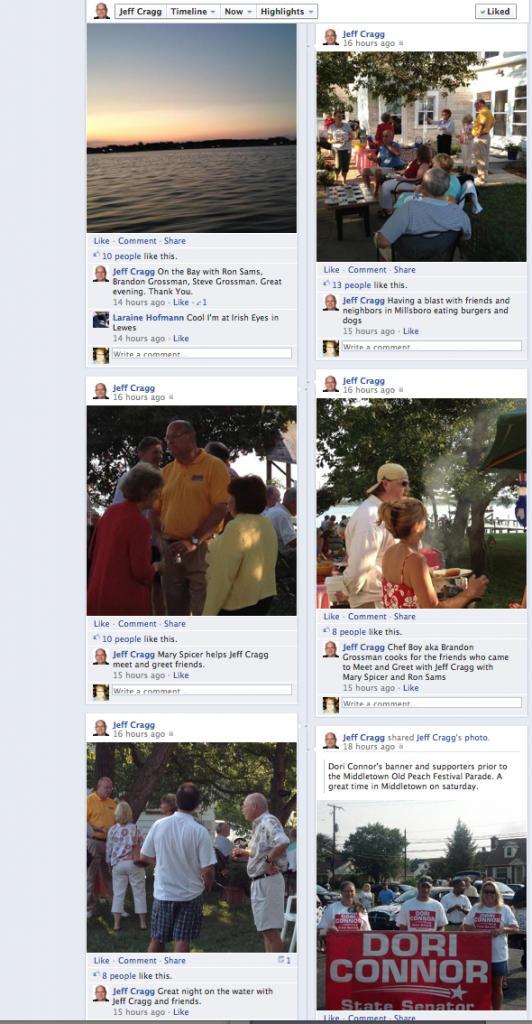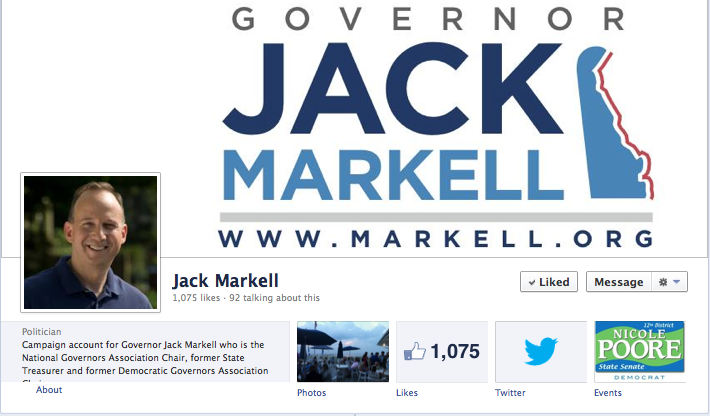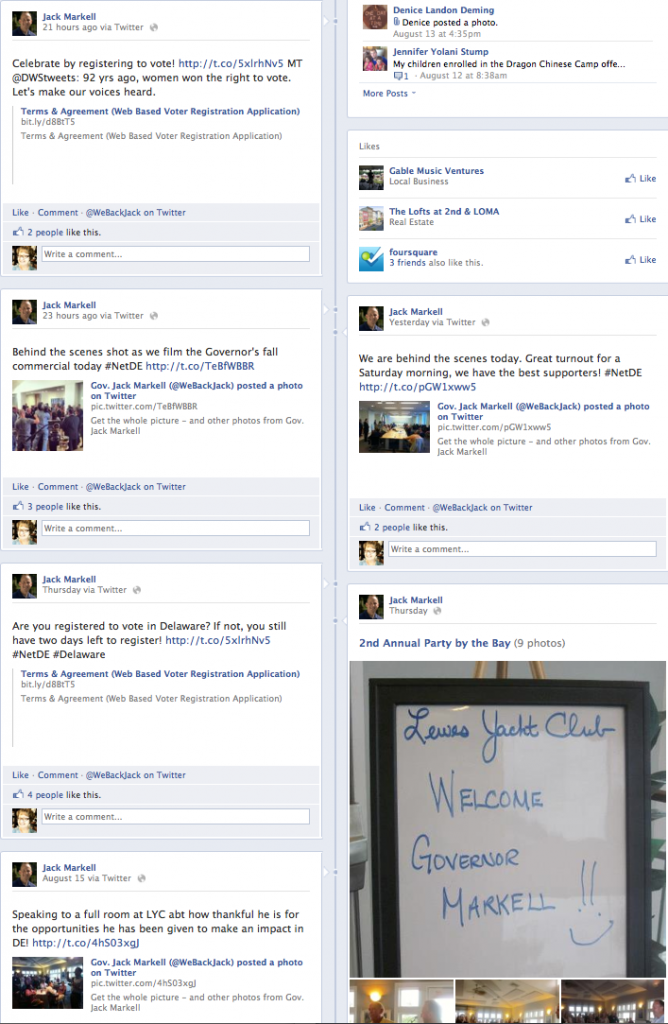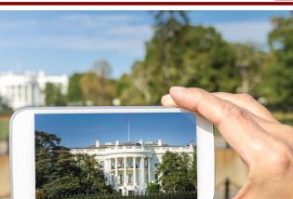The state of Delaware is not only voting for President of The United States but also Governor of Delaware.
The candidates for Governor are Democrat incumbent Jack Markell and Republican candidate Jeff Cragg. They both have Facebook pages, but how can Republican candidate Jeff Cragg create a more effective Facebook presence?
As I said in my article in The Journal of Contemporary Rhetoric:
Understanding one’s audience is key to creating effective messages that promote action, create interest, and show that the rhetor understands the problems the audience wants solved.
Jeff Cragg: His Facebook page for the month of August is filled with pictures. At first glance, I see him out in public but no information that keeps reminding me why I should vote for him. I would like to see who endorses his campaign, which builds credibility, and some key issues that link back to his campaign web site at least once a day. Cragg could use a more professional profile picture. Yes, sometimes it’s the visual rhetoric that can speak volumes for a candidate.
On Jeff Cragg’s Facebook page I have to scroll down through eight pictures to see information. I would post pictures in specific albums. Every event should have its own album and if it’s just a generic campaign trail picture, put that in the campaign trail album.
Additionally, I question who is endorsing him? Endorsements can build a candidate’s credibility. I would also like to have more information about the pictures posted. I would like to see more links posted that would lead back to his web site for more information. Converging all his online media is important in taking advantage of the rhetorical situation, and allowing the audience to know what situation is the most important to them to share with their friends. The more candidates take advantage–the more the audience may share their information.
What would I like to see on Cragg’s page– more video showing him at speaking events. Governor Markell has video, which helps to assess a candidate’s speaking ability to the electorate. Also, it allows citizens to hear the whole speech rather than just news soundbites.
Jack Markell: At first glance, readers learn how to register to vote. The Governor also has information about supporters and speeches listed. The Governor also has pictures as well. His profile picture looks professional and engaging. I like Jack’s photo album titled 2012 Endorsements.
There is not much I can nitpick about on his Facebook page. He has more content because Markell’s campaign is posting to Facebook through Twitter. The Governor is converging his Tweets, Facebook and web site well.
Social Media–Stumping online
Facebook users are not fans of mixing their personal Facebook accounts with political figures. If you want to attract the attention of the electorate, politicians need to try to provide information about the issues as well as photos of events. I would suggest a good mixture of multimedia–otherwise you lose the message of your campaign. In fact, I would suggest having the campaign use selective tweets to post to Facebook at the same time. Twitter and Facebook work well together and by using Twitter to post Facebook content saves time and energy for a campaign. Campaigns need to create content that supporters who do “like” their pages can share to their followers. Social media is about empowering the electorate and letting them decide what they deem important.
Social media is a great tool for campaigns. Politicians must remember–if a Facebook member “likes” their campaign page that candidate has been invited theoretically into someone’s personal space such as inviting friends over to “hang out.” In fact, liking a political candidate’s Facebook page is like putting out a yard sign to show support for a specific candidate. The candidate must respect this space. A candidate has to engage the readers with information to empower the citizen. The candidates need to keep to the issues, keep sharing endorsements and keep showcasing volunteer efforts and needs. The campaigns need to keep setting their own agenda rather than letting the media set the agenda. Convergence from their web site to their social media outlets is key. They all must flow together.
According to Journalism.org:
In 2012, in short, voters are playing an increasingly large role in helping to communicate campaign messages, while the role of the traditional news media as an authority or validator has only lessened.
This means, candidates need to create content that readers want to share, retweet, and like. Candidates have an opportunity to create more messages that could help inform the undecided electorate through established supporters. Campaigns need to get used to becoming their own media outlet and create meaningful content that sets their own agenda that allows their supporters to spread the campaign’s message while maintaining and building the candidate’s credibility.
A campaign must always be thinking about their next social media move. Candidates must keep posting a variety of information in different ways to keep the audience engaged and informed. Campaigns can now give their readers a real-time, first-hand look into their campaigns that television and print could never provide.
Part II– the Governor Race in Delaware– Web site to Twitter bites

